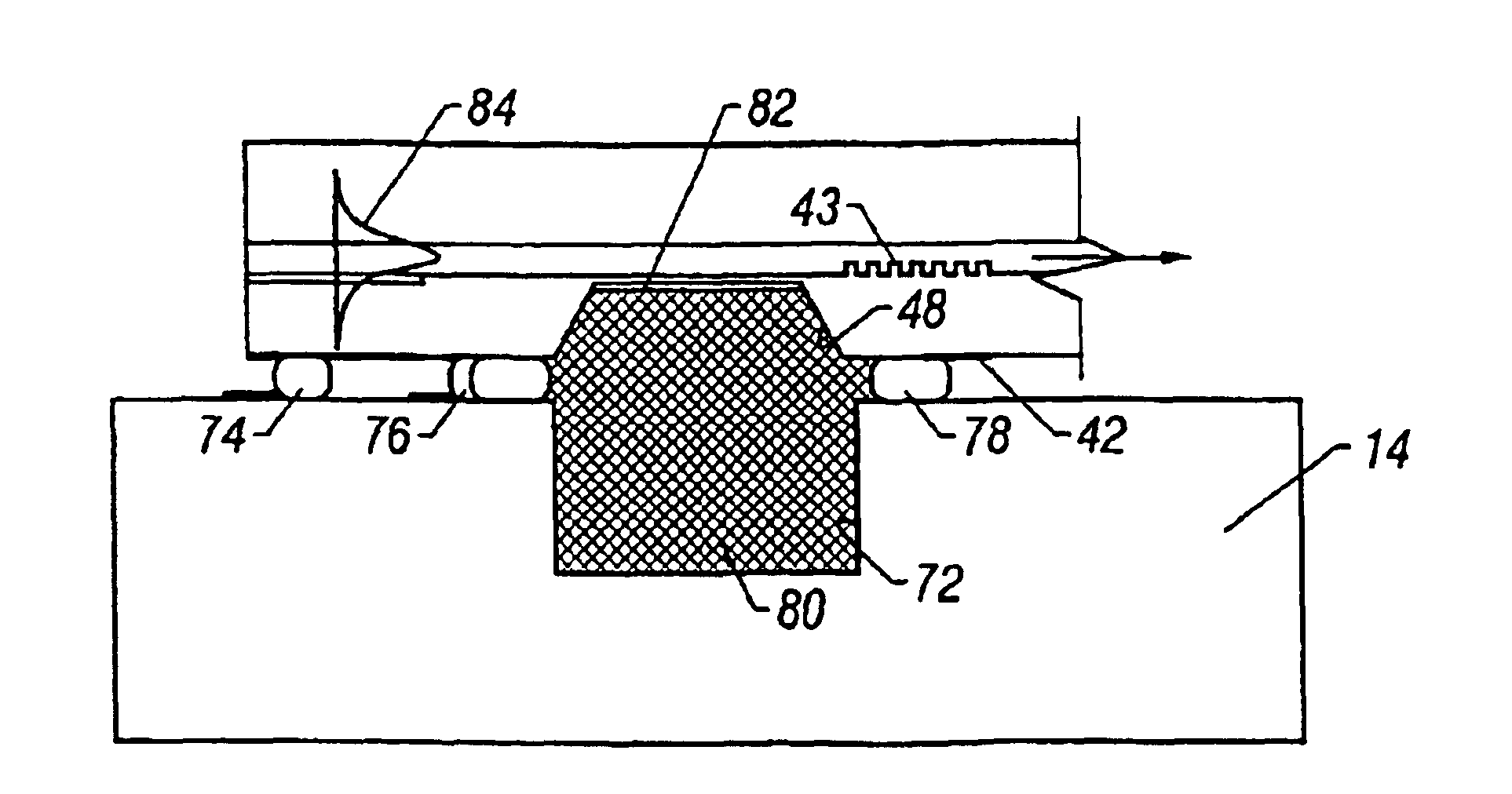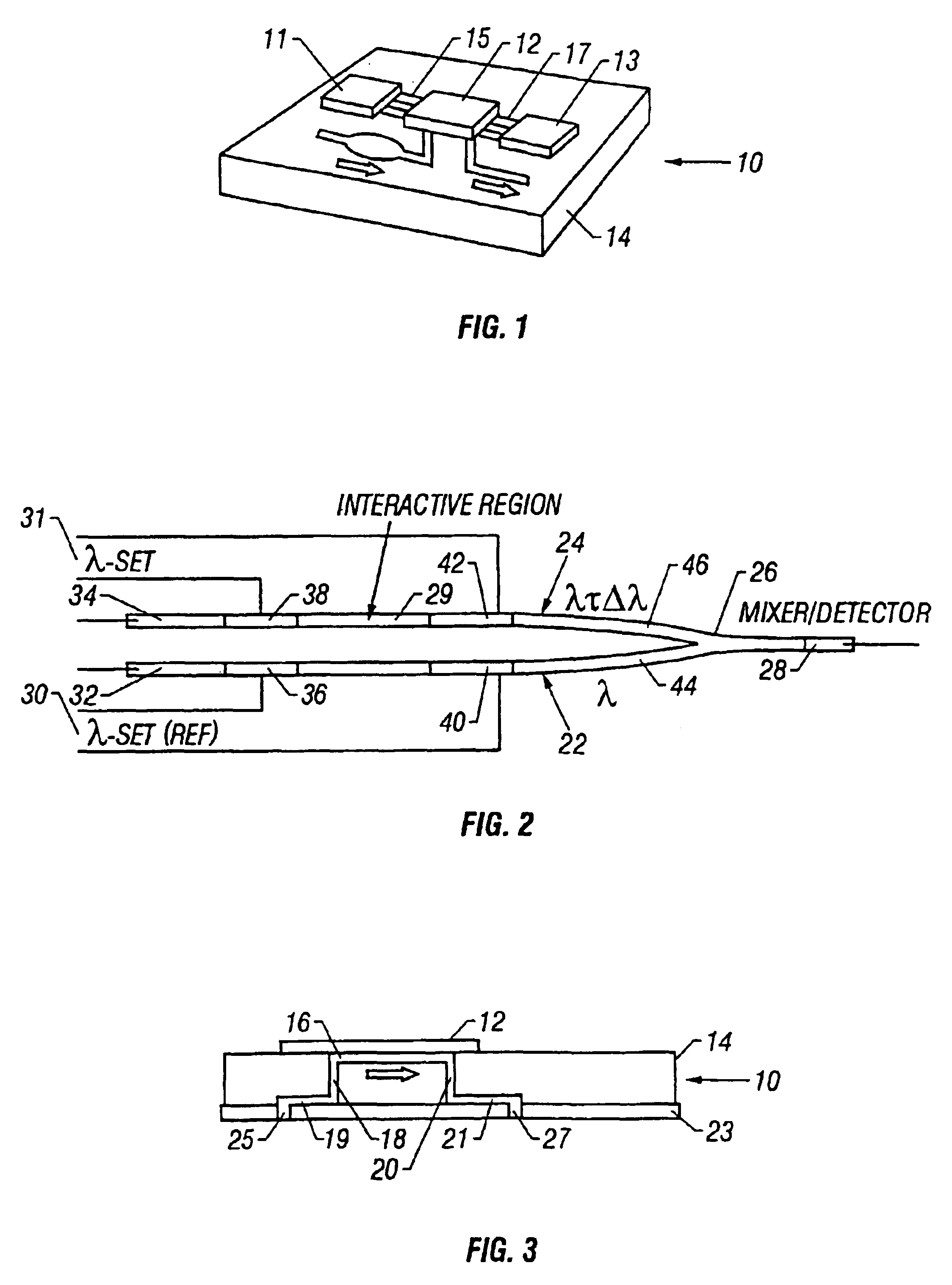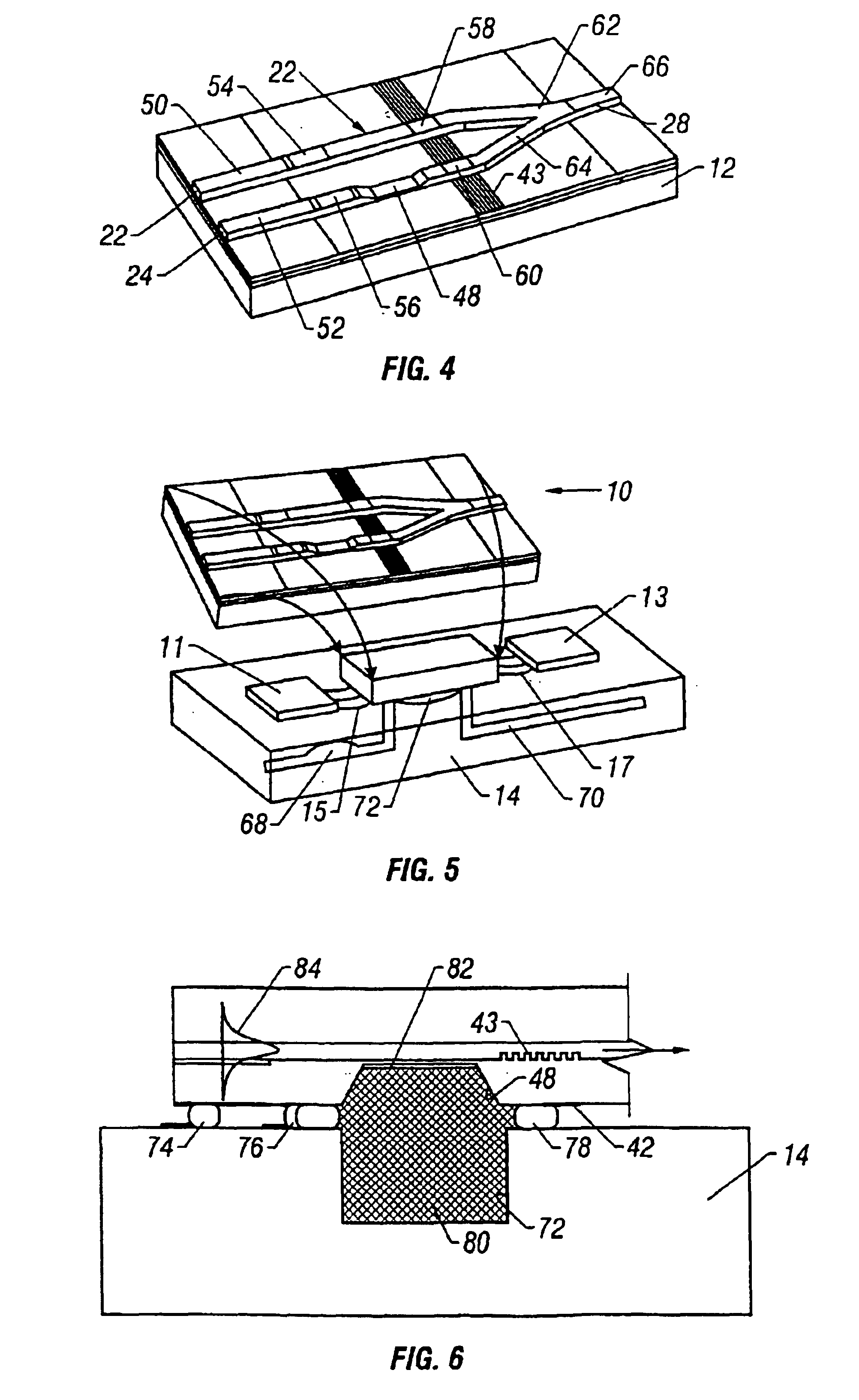Integrated sensor
a sensor and integrated technology, applied in the field of molecular species detection, can solve the problems of limiting the size and flexibility of such on-chip devices, scaling down existing technologies such as fluorescent measurement schemes, to the chip scale does not provide effective solutions, and limits the robustness of current technologies, so as to avoid mixing steps during sample preparation
- Summary
- Abstract
- Description
- Claims
- Application Information
AI Technical Summary
Benefits of technology
Problems solved by technology
Method used
Image
Examples
Embodiment Construction
[0025]Referring to FIG. 1 an integrated optical chip device 10 in accordance with this invention is formed by flip-chip bonding an InP-based laser / detector chip 12 to a Si-biofluidic chip 14. The InP optical sensor chip measures slight frequency shifts due to evanescent wave interactions with fluidic medium in a laser cavity, as will be described in more detail below, and can be referred to as a tunable laser cavity sensor (TLCS).
[0026]Referring additionally to FIG. 3, the biofluidic chip 14 contains a microfabricated flow cell with an opening 16 adjacent a cavity in the sensor chip 12 as will be described below in more detail. Microchannel 18 feeds fluid to the opening 16 and an outlet microchannel 20 removes effluent from the opening 16. The opening 16 and the sensor cavity (not shown in FIGS. 1 and 3) serve as a sample chamber, a diffusion-dominated region, where analyte can diffuse to a wall of the sensor cavity. An adsorbent, such as a capture antibody for immunoassays, or a li...
PUM
| Property | Measurement | Unit |
|---|---|---|
| wavelength range | aaaaa | aaaaa |
| lasing wavelengths | aaaaa | aaaaa |
| frequency | aaaaa | aaaaa |
Abstract
Description
Claims
Application Information
 Login to View More
Login to View More - R&D
- Intellectual Property
- Life Sciences
- Materials
- Tech Scout
- Unparalleled Data Quality
- Higher Quality Content
- 60% Fewer Hallucinations
Browse by: Latest US Patents, China's latest patents, Technical Efficacy Thesaurus, Application Domain, Technology Topic, Popular Technical Reports.
© 2025 PatSnap. All rights reserved.Legal|Privacy policy|Modern Slavery Act Transparency Statement|Sitemap|About US| Contact US: help@patsnap.com



